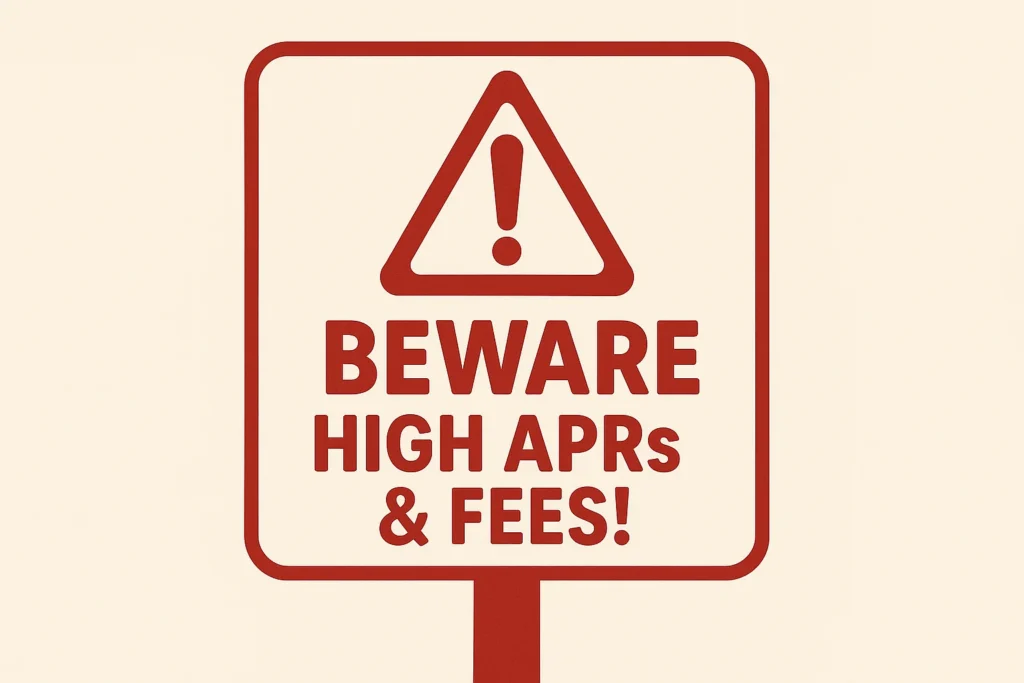Let’s start with the basics: A personal loan is a type of installment loan, typically unsecured, that provides borrowers with a lump sum of money they can use for various purposes, which is then repaid in fixed monthly payments (installments) over a predetermined period, plus interest. Facing an unexpected expense, dreaming of a home renovation, or maybe drowning in high-interest credit card debt? A personal loan might seem like a straightforward solution, offering quick access to funds. But before you jump in, understanding the ins and outs – from personal loan rates to qualification requirements, especially if you have less-than-perfect credit – is crucial. This comprehensive guide will walk you through what is a personal loan, its common uses, types, key factors like personal loan interest rates, how to get a personal loan (even a personal loan for bad credit), where to look, potential pitfalls, and alternatives in 2025.
Table of Contents
What is a Personal Loan? The Core Definition
At its heart, a personal loan allows you to borrow a specific amount of money from a lender (like a bank, credit union, or online lender) and repay it over time. Key characteristics usually include:
- Lump Sum: You receive the full loan amount upfront.
- Installment Repayment: You pay it back in regular, equal installments (usually monthly) over a set loan term.
- Fixed or Variable Interest: Loans come with either a fixed personal loan interest rate (stays the same) or a variable rate (can change).
- Secured or Unsecured: Most are unsecured (no collateral needed), but secured options exist.
- Versatile Use: Funds can often be used for almost any legitimate purpose.
Unlike specific-purpose loans like a mortgage (for a house) or a typical car loan (secured by the vehicle), personal loans offer flexibility.
Common Uses for Personal Loans
People get a personal loan for a wide variety of reasons. Some common uses include:
- Debt Consolidation: Combining multiple high-interest debts (like credit cards) into a single loan, potentially with a lower personal loan interest rate, simplifying payments. See our guide on How to Get Out of Credit Card Debt).
- Home Improvements: Funding renovations, repairs, or upgrades without using home equity.
- Major Purchases: Financing significant items like appliances, furniture, or electronics.
- Medical Expenses: Covering unexpected or planned medical bills not covered by insurance.
- Emergency Expenses: Handling unforeseen costs like major car repairs or urgent travel.
- Life Events: Funding weddings, vacations, moving expenses, or adoption costs.
- Vehicle Financing: While dedicated car loans exist, sometimes a personal car loan (often unsecured) might be used, though rates may be higher than secured auto loans.
- Starting a Small Business: While dedicated business loan products are often better suited, some entrepreneurs use personal loans for initial startup costs, especially if business credit isn’t established.
Lenders may ask about the loan’s purpose during the application, and some may restrict use (e.g., prohibiting use for gambling, illegal activities, or sometimes investments or education costs covered by specific student loans).
Types of Personal Loans: Secured vs. Unsecured & Fixed vs. Variable
Understanding the different types helps you choose wisely:
Secured vs. Unsecured Personal Loans
- Unsecured Personal Loans: These are the most common type. Approval is based solely on your creditworthiness (credit score, income, debt load). No collateral is required, meaning the lender has no specific asset to seize if you default. This makes them riskier for lenders, often resulting in higher interest rates compared to secured loans, especially for borrowers with less-than-perfect credit.
- Secured Personal Loans: These loans require you to pledge an asset as collateral (e.g., a savings account, CD, car title, sometimes investments). If you fail to repay the loan, the lender can seize the collateral. Because this reduces the lender’s risk, secured loans are often easier to qualify for (especially with lower credit scores) and may come with lower personal loan interest rates or allow for larger loan amounts. However, you risk losing your valuable asset.
Fixed vs. Variable Interest Rates
- Fixed-Rate Personal Loans: The personal loan interest rate remains the same for the entire loan term. This means your monthly payments are predictable and won’t change, 1 making budgeting easier. Most personal loans have fixed rates. 1. almirrealestate.com almirrealestate.com
- Variable-Rate Personal Loans: The interest rate can fluctuate over the loan term based on changes in a benchmark index rate (like the Prime Rate). Your monthly payments could increase or decrease. While they might sometimes start with a lower introductory rate, they carry the risk of payments becoming unaffordable if rates rise significantly. These are less common for personal loans than fixed rates but do exist.
Key Factors Influencing Your Personal Loan
Several elements determine your loan options and costs:

- Annual Percentage Rate (APR): This is the total cost of borrowing expressed as a yearly percentage. It includes the personal loan interest rate PLUS any mandatory fees (like origination fees). Always compare loans using the APR, not just the interest rate, for an accurate cost comparison. Personal loan interest rates vary widely based on the factors below.
- Loan Term: The length of time you have to repay the loan (e.g., 24, 36, 48, 60, 72 months, or even longer). Longer terms mean lower monthly payments but significantly more total interest paid over the life of the loan. Shorter terms have higher payments but save you money on interest.
- Loan Amount: How much you need to borrow. Lenders have minimum and maximum loan amounts (typically $1,000 to $50,000, though some go up to $100,000).
- Fees: Be aware of potential fees:
- Origination Fee: A fee charged by some lenders for processing the loan, often deducted from the loan proceeds (meaning you receive less than the full loan amount). It’s usually a percentage of the loan amount (1%-8% or more).
- Late Payment Fee: Charged if you miss a payment due date.
- Prepayment Penalty: A fee charged by some lenders if you pay off the loan early (less common now, but always check).
- Insufficient Funds (NSF) Fee: If an automatic payment bounces.
- Credit Score & History: This is arguably the most critical factor for unsecured loans. Lenders use your credit score (like FICO or VantageScore) and credit history to assess your risk as a borrower.
- Excellent Credit (e.g., 720+): Qualifies for the lowest personal loan rates and best terms.
- Good Credit (e.g., 690-719): Still eligible for competitive rates.
- Fair Credit (e.g., 630-689): May qualify, but expect higher interest rates.
- Bad Credit (e.g., below 630): Qualification is challenging; rates will be very high if approved. Options are limited (bad credit personal loan, loan for bad credit).
How to Get a Personal Loan: Step-by-Step
Ready to apply? Here’s how to get a personal loan:
- Check Your Credit: Know your credit score and review your credit report before applying. Get your free reports from the official source: AnnualCreditReport.com. Dispute any errors. Understanding your credit helps set realistic expectations.
- Determine How Much You Need: Borrow only what you absolutely need and can comfortably afford to repay. Over-borrowing increases costs and risk.
- Calculate Your Potential Payment: Use an online loan calculator personal to estimate monthly payments based on different loan amounts, potential personal loan rates, and terms. Ensure the payment fits your budget. Need help budgeting? Check out How to Make a Budget Guide or Effortless Monthly Budgeting).
- Shop Around & Compare Lenders: Don’t take the first offer! Get rate quotes from multiple lender types:
- Banks: Check with your current bank; they may offer relationship discounts. Often require good-to-excellent credit.
- Credit Unions: Often offer competitive rates and favorable terms, especially for members. May be more flexible with less-than-perfect credit than large banks. Consider a credit union personal loan.
- Online Lenders: Often have quick application processes, fast funding, and cater to a wider range of credit scores (including specific lenders focusing on fair or bad credit personal loans, e.g., platforms like OneMain Financial or SoFi personal loan options cover various credit tiers, though rates vary significantly).
- Utilize Pre-Qualification: Many online lenders and some banks/credit unions offer pre-qualification with a soft credit check (which doesn’t hurt your score). This allows you to see potential rates and terms you might qualify for before submitting a formal application (which involves a hard credit check).
- Choose the Best Offer: Compare APRs, loan terms, fees, and monthly payments across the offers you receive. Read the fine print carefully.
- Submit Formal Application: Provide required documentation (proof of identity, address, income like pay stubs or tax returns). The lender will perform a hard credit inquiry.
- Review & Sign Loan Agreement: If approved, carefully read the final loan agreement before signing. Ensure all terms match what you expected.
- Receive Funds: Funds are typically deposited directly into your bank account, often within a few business days (sometimes faster with online lenders).
Where to Get Personal Loans & Handling Bad Credit
As mentioned, primary sources are banks, credit unions, and online lenders.
- Loan Aggregators: Websites like Lending Tree (
is lending tree legitis a common question) allow you to compare offers from multiple lenders via one application. Pros: Convenient comparison. Cons: You may receive many calls/emails from lenders, your data is shared, and the offers shown aren’t always final until a formal application. Use them for initial research but be prepared for follow-up contacts. - Options for Bad Credit: Getting a personal loan for bad credit is challenging and expensive. Rates will be high (often near or at the maximum legal limit, typically 36% APR for legitimate installment loans, much higher for riskier loan types). Options might include:
- Lenders specializing in bad credit loans (like OneMain Financial).
- Credit Union Personal Loans: Some credit unions offer Payday Alternative Loans (PALs) or are generally more willing to work with members with lower scores.
- Secured Personal Loans (requiring collateral).
- Getting a Cosigner with good credit.
- Improving finances overall is key. See our Beginner’s Guide to Personal Finance).
WARNING: Avoiding Predatory Loans & Scams
Be extremely cautious when searching for loans, especially if you have bad credit. Avoid:

- Payday Loans: Extremely short-term loans with astronomical APRs (often 300%-400%+) designed to be repaid on your next payday. They easily trap borrowers in cycles of debt.
- Car Title Loans: Use your car title as collateral, often with very high APRs and short terms. You risk losing your vehicle.
- High-Cost Installment Loans: Some online lenders offer installment loans with excessively high APRs (sometimes triple digits), targeting bad credit borrowers. Keywords like “grace loan advance reviews” or “is fast loan advance legit” often point towards these potentially risky, high-cost lenders. Be wary of reviews for services promising guaranteed approval or instant cash with extremely high rates.
- Guaranteed Approval Claims: Legitimate lenders assess risk; guaranteed approval is a major red flag.
- Upfront Fees: Demands for fees before loan approval or disbursement are often scams.
- Pressure Tactics: Rushing you into signing without reading terms.
- Lack of Transparency: Unclear information about APR, fees, and terms.
Always check lender legitimacy, read reviews from multiple reputable sources, understand the full cost (APR), and ensure you can afford the repayments. If an offer seems too good (or too easy) to be true, it probably is. The Federal Trade Commission (FTC) (https://www.ftc.gov/) and Consumer Financial Protection Bureau (CFPB) (https://www.consumerfinance.gov/) offer resources on spotting and avoiding loan scams and predatory lending.
Alternatives to Personal Loans
Before taking out a personal loan, consider alternatives:
- Savings: The best option is always to save up for the expense if possible. Explore Guide to Savings Accounts).
- 0% APR Credit Card (Introductory Offer): For consolidating debt or financing a purchase, if you can pay off the balance before the high regular APR kicks in. Requires good credit.
- Home Equity Loan or HELOC: Uses your home equity as collateral; generally offers lower rates but puts your home at risk.
- 401(k) Loan: Borrowing from your retirement savings. Comes with risks and potential setbacks to retirement goals.
- Borrowing from Family/Friends: Can work but requires clear terms and carries relationship risk.
- Negotiating Bills: Contact medical providers or other creditors to see if payment plans are available.
Conclusion: Using Personal Loans Wisely
A personal loan can be a useful financial tool when used responsibly for the right reasons, like consolidating high-interest debt or financing a necessary major purchase. Understanding the types of loans, the impact of your credit score on personal loan rates, the importance of comparing APRs using tools like a loan calculator personal, and the difference between reputable lenders and predatory offers is crucial.
Always borrow only what you need, ensure the monthly payments fit comfortably within your budget, and prioritize paying back the loan on time. By doing your homework and approaching personal loans strategically, you can leverage them effectively without falling into a debt trap.
Frequently Asked Questions (FAQ)
What is the main difference between a personal loan and a credit card?
A personal loan provides a fixed lump sum repaid in equal installments over a set term, usually with a fixed interest rate. A credit card offers a revolving line of credit you can draw from and pay back over time, typically with a variable interest rate that is often much higher than personal loan rates, especially if you carry a balance.
How much does my credit score affect my personal loan interest rate?
Significantly! Borrowers with excellent credit scores (typically 720+) qualify for the lowest personal loan interest rates (best APRs). Fair or bad credit scores result in much higher APRs, making the loan considerably more expensive, or may lead to denial altogether from mainstream lenders.
Where can I find the best personal loan rates?
Generally, credit unions and online lenders often offer more competitive personal loan rates than traditional large banks. However, rates depend heavily on your creditworthiness. The best approach is to get pre-qualified quotes from multiple sources (banks, credit unions, online lenders) to compare APRs based on your specific profile. Remember to compare APR, not just the interest rate.
Can I get a personal loan with bad credit?
Yes, it’s possible to get a personal loan with bad credit, but options are limited, and the costs are high. Lenders specializing in bad credit personal loans charge very high APRs (often close to 36% or more). Secured loans (requiring collateral) or finding a cosigner with good credit might be necessary alternatives. Be extremely wary of “guaranteed approval” offers or loans with excessively high rates/fees, as they can be predatory.
What’s the difference between a secured and an unsecured personal loan?
An unsecured personal loan (the most common type) relies solely on your creditworthiness for approval – no collateral is needed. A secured personal loan requires you to pledge an asset (like savings or a car title) as collateral, which the lender can take if you default. Secured loans may be easier to get with lower credit scores and might offer better rates but carry the risk of losing your asset.



